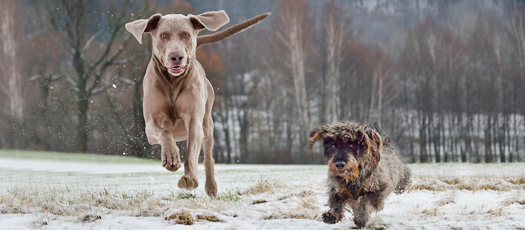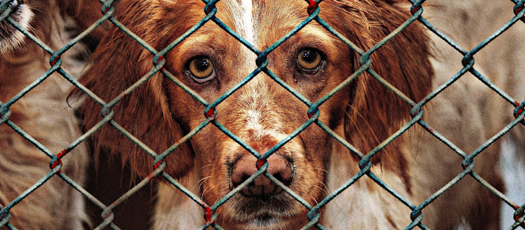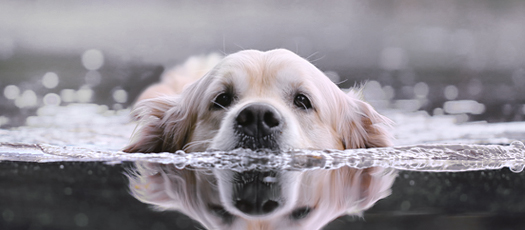
Tips for a relaxed encounter between dogs
Do you know that feeling? Your heart races, and you get a lump in your throat and clammy hands when you see another person walking a dog in the distance. Do you think about how to get around them without a big fuss on the leash? If so, we have three tips for you to make future encounters with other dogs go more smoothly.
Many dog owners, us included, have had bad experiences encountering other dogs and their owners in the past. There was a time when we really went out of our way to avoid any and all other dogs and their owners. Not just because we were tired of confrontations and comments from other owners, but also because our own dog was simply impossible to deal with, from tugging on the leash to frantic barking and a total inability to continue to handle the dog.
These bad experiences stemming from various negative dog encounters lead to an uncertain mood and disorientation, which are picked up by your dog. The dog then reacts by barking to compensate for the stress and moves past the other dog and owner on the leash in order to get out of the situation by using the flight response to manage stress. Now that you know the causes of your dog’s behavior, you can start with training.
Get excited when you see another dog and its owner
For this type of training, it is important to work on yourself first and change your mindset if you are projecting uncertainty as the owner. Try to view every encounter with another dog as an opportunity to practice with your dog and grow even closer as a team.
Below are our three top tips for getting through future dog encounters more calmly.
1. Focus on a point in a low-stimulus environment
Have you ever noticed that your dog pulls on the leash even more and tries to get to the approaching dog if you look at the dog and its person and pay attention to how close they are?
Our attention is directed to where our gaze goes, and our dogs are also guided by that. If we look at the other dog, that makes the approaching pair even more interesting to our own dog. Your energy also follows your focus. Try to ignore the approaching stimulus and reorient yourself. If you do this, your dog will also notice over time that it is not worthwhile for him to focus on the approaching dog and owner and will direct his attention elsewhere.
Do you notice the other dog and person from afar? Then it’s time for you to initiate the following exercise. It’s never too early to start refocusing your attention. At a larger distance, our dog also has the opportunity to focus on us, since the stimulus is still far enough away for him. If there’s only ten meters between us and the approaching dog, though, you will have a hard time capturing and redirecting your dog’s attention at the start of the exercise. You should also always start reinforcing your dog’s desirable behavior early on. Don’t wait until your dog has already displayed undesirable behavior. Otherwise, we need to correct our dog too much, which leads to frustration on both sides.
Make a small detour around the approaching dog and owner with your dog. That already takes some of the tension out of the situation. Now look for an object in the distance. It might be a park bench, a tree, a fence, a butterfly or something else. Now focus entirely on the object you have found. Do not look to either side; simply focus only on this object in the distance. Approach this object purposefully with your dog. This signals to your dog that the other dog and its person are uninteresting. By doing this, you are giving your dog reassurance by purposefully distancing yourself from the other dog, thereby taking the stress out of the situation. This gives your dog guidance. It also tells him that in the future, you will handle situations that are uncomfortable to him and stand up for him.
So: act preventively, react early on, and reinforce your dog’s desirable behavior right at the start.
2. Trigger a positive feeling – and don’t forget to breathe!
The first exercise, “out of sight, out of mind,” helps you redirect your attention. The negative feeling that you have otherwise taken away from encounters with other dogs still remains after this exercise, though. Our second tip is to turn that negative feeling into a positive one.
Think back to the last vacation you took with your dog. You might have walked barefoot on the beach with him, or perhaps you watched the sunset together. Or did you go hiking in the mountains and enjoy a spectacular view? Look at your dog and deliberately think back to the positive feeling you had on that vacation. Do you feel the energy, joy and gratitude that this memory calls up for you? If so, you can use this exercise on your next walk.
If you see another dog and person approaching from a distance, look at your dog, inhale deeply through the nose and exhale through the mouth, and recall the feeling you triggered. Your positive mental state will transmit this feeling to your dog as well. The dog will sense your mood and be easier to guide and control.
So look forward to every new encounter with another dog. Look at your dog. Breathe deeply and call to mind a positive feeling.
3. Give your dog an alternative task
The exercises above will help you as a dog owner keep your calm in stressful situations and focus on the essentials. But it is also beneficial to tell your dog what he is supposed to do in these kinds of situations. Most times, we only know what our dog is NOT supposed to do: “I don’t want him to bark and thrash around on the leash.” It is better to focus on what your dog is supposed to show instead when encountering another dog and owner: “I want my dog to walk by the other dog calmly, with no tension in the leash, and look at me in the process.” And with that, we’ve created an alternative task.
In a low-stimulus environment, teach your dog to look at you in response to a signal. As soon as the conditioning between the signal and the action has taken place, you can build this exercise into your daily walks. When you see another dog and person approaching from a distance, it’s time to start working with your dog. Work on the alternative behavior now. Tell your dog what you want him to do instead of tugging, barking, and thrashing. We like to use the word signal “look” here, for example. Give your dog the audible signal to look at you. Engage with the dog. If he displays the desired behavior, offer extensive praise. Focus only on your dog and the alternative behavior, forgetting everything else around you. That will direct your focus toward the exercise alone, and your dog will also know exactly what he is supposed to do instead.
Of course, it is also very effective to combine all three exercises during a walk when you encounter another dog. Try them out to see what feels most comfortable for you and your dog and which exercise helps you make your walk a relaxed, harmonious one.


